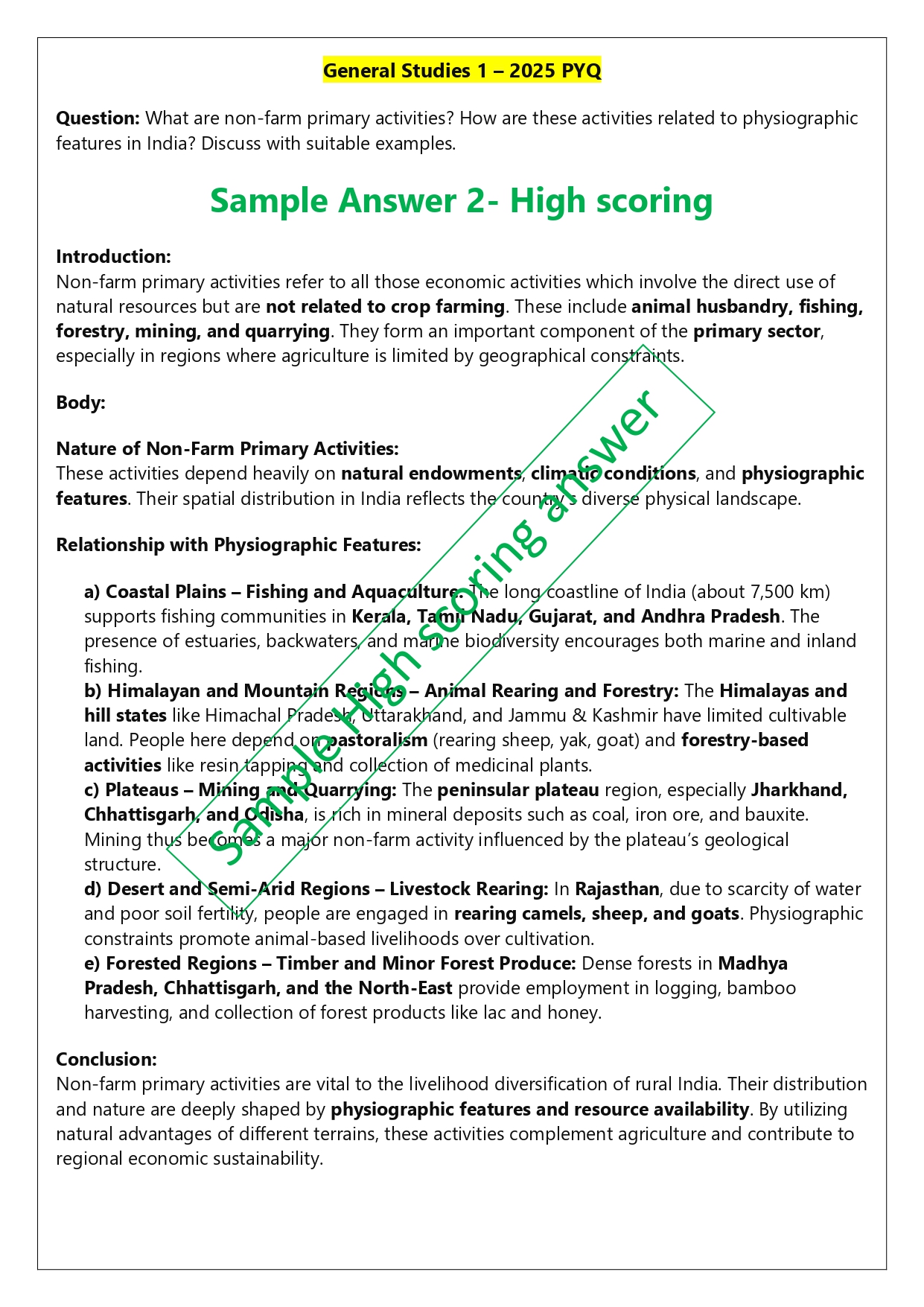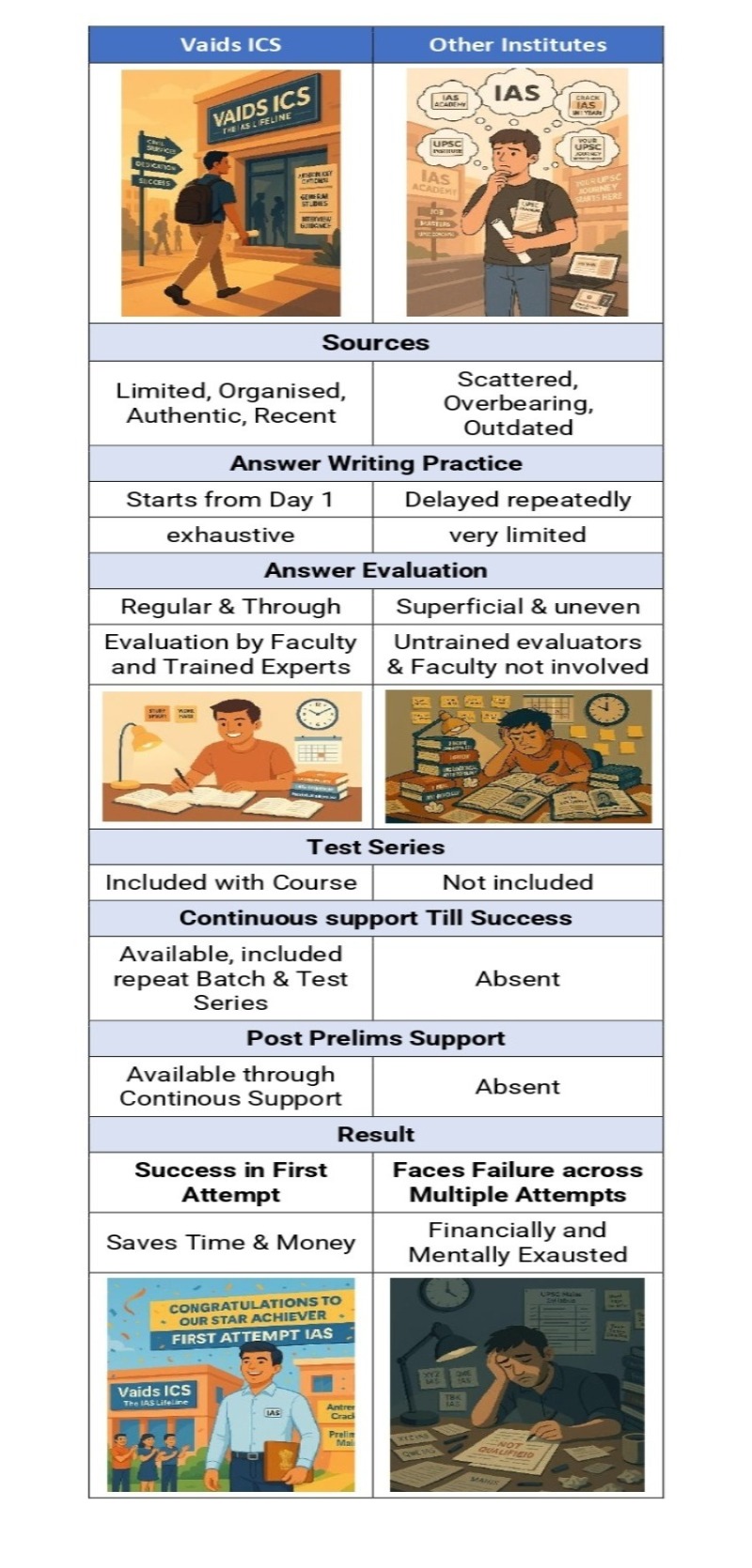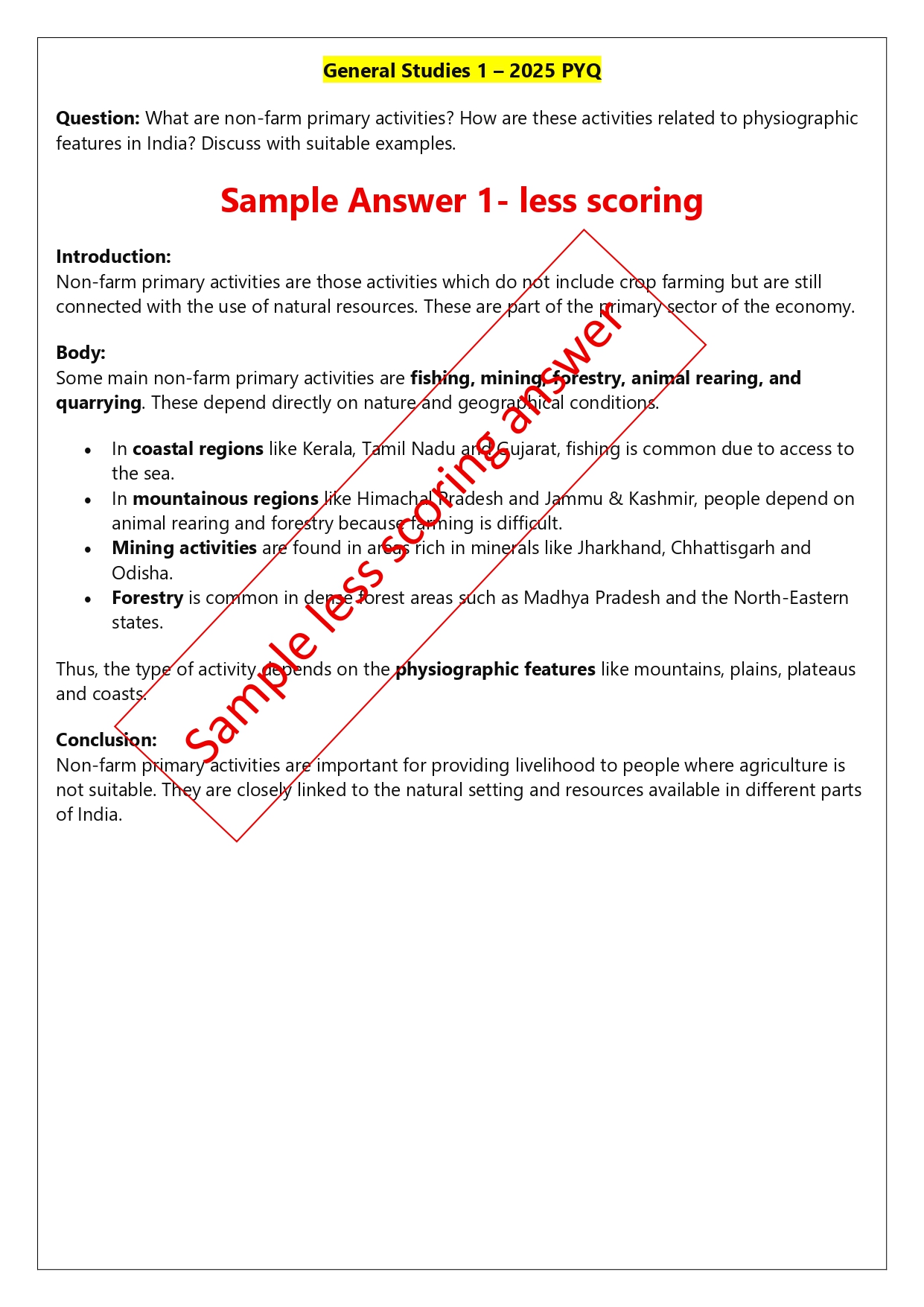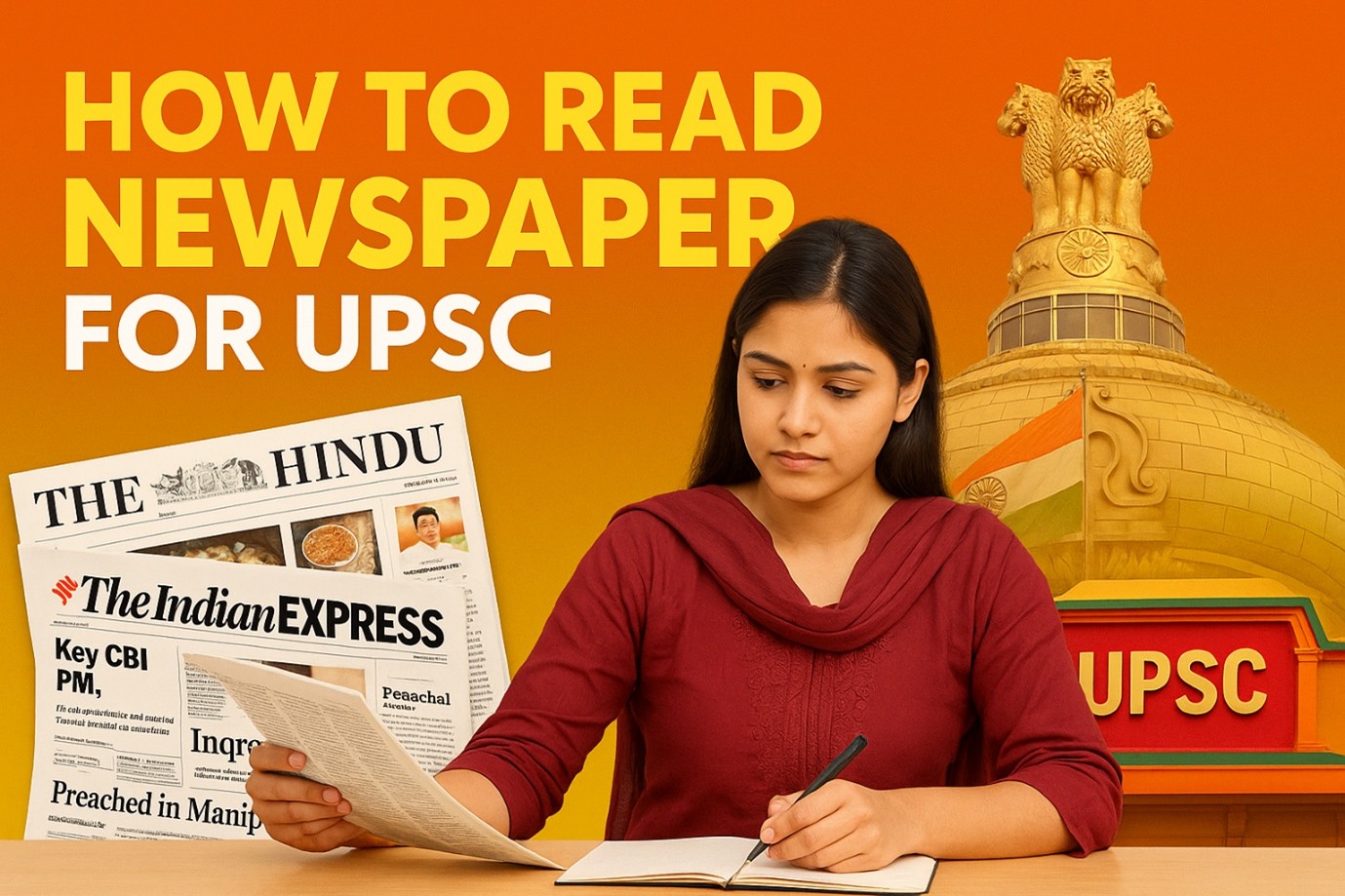How to Write High-Scoring UPSC Mains Answers
What the Examiner is expecting from us
Let’s be honest — UPSC Mains isn’t just about how much syllabus you’ve mugged up, it’s actually about how logically, orderly and methodologically you can express what you’ve studied. Examiners check hundreds of copies in one go, and they hardly spend more than a minute or two on each answer. So your job is to make their life easy — they should instantly feel that yes, this person has good understanding what he or she is writing.
Abiding by the following you can make sure you score better than your competition
Conceptual Clarity: The very first thing the examiner notices is — have you really understood the question? Or are you just dumping facts? Clarity means you define the key terms properly, use the right technical words, and show that you actually get the idea. For example, if the question says cultural relativism, the examiner doesn’t want a story — they just want to see that you know it means judging a culture by its own standards, not from someone else’s viewpoint.
Structured Thinking: Random information, even if correct, looks messy on paper. A good answer has a clear beginning, middle, and end — like a small story with flow. It gives the impression that you think in an organized way.
Intro: address question regarding
Body: data/analysis as per requirement
Conclusion: direct unambiguous finalizing
Balanced Perspective: UPSC loves balanced answers. Don’t go to extremes or sound emotional. Talk about both sides — positives and negatives, success and failure, ideal and real. A good answer sounds mature and fair-minded, not biased or one-sided. GS is not the right place to show emotions except ethics case study, leave all emotions for essay.
Value Addition: This is what separates average answers from top ones. Use reports, committees, examples from current affairs — like NITI Aayog, UNDP, or government schemes. It shows that your preparation is updated and connected to the real world. Added mention of such Recognised bodies immediately grabs attention forcing examiner to give time to your answer and ultimately give better score.
Crisp Expression articulation: The examiner is not impressed by big words. They want clean, simple, and to-the-point writing. Avoid long sentences. Underline keywords. Keep it visually easy to read.
Any how you have 150-350 word to write an answer, using longer ambiguous phrase only makes you present less content.
The Anatomy of a Good Answer
A high-scoring answer always has three solid parts — Introduction, Body, and Conclusion. Think of it like a small essay that has direction and flow.
Introduction: This is your first impression. It should directly address what’s being asked. Define the key terminology or idea and set a quick context. Don’t make it more than 3–4 lines, 30 words— short and sweet works best. Start the introduction in a way so that it becomes a taking off place for writing content that address the demand of the question. Make it catchy, and decisive, with a perfect intro, examiner jumps straight to conclusions and marks you well.
Body: This is where the marks lie. Break it into smaller sections, use subheadings or bullet points. Add relevant data, examples, and theories. Make sure each point links with the previous one — don’t jump randomly.
Analysis is indispensable part of an answer, whether asked or not, it’s an analytical exam after all.
Conclusion: Don’t just repeat the same points. Try to end with something thoughtful — a solution, a forward-looking idea, or a value-based reflection. Something like, “Balancing development with equality is India’s ongoing challenge.”
Limited words: Repetition makes you lose marks and ability to express your knowledge. Also, the evaluator might feel your content to be verbose proposing same ideas again and again.
A good answer reads smoothly and leaves the examiner thinking, “Nice, this student knows what he’s talking about.”
The Art of Structuring — Introduction, Body, Conclusion
Even the best information fails without structure. Structure is like the skeleton — it holds your content together.
Introduction: Start by understanding what exactly the question is asking. Introduce key terms of the questions directive words like analyse, evaluate, or discuss change the whole tone. Define the concept, give 1–2 lines of context. For instance, if the topic is tribal integration, start with what it means and maybe one quick reference to constitutional provisions or recent schemes.
Body: Present your points logically. You can go chronological (past to present), thematic (social, economic, political), or cause-effect depending on the question. Use small headings or numbering. If you can, draw a small, neat diagram — it’s like bonus marks. Mention examples, scholars, or reports to strengthen your argument, don’t be afraid to criticize the government policy but ensure to provide solutions also.
Conclusion: End with maturity. A single powerful line like “True integration is not just policy-driven but empathy-driven” can leave a lasting impression. Ensure that the conclusion is decisive and well oriented, and if criticizing then propose solution too. Any recent information related to the topic must be a part of this.
Presentation and Value Addition
Many students don’t realize that presentation can literally decide their score. When your copy looks clean and structured, it becomes examiner-friendly. If you feel you hand writing is bad, compensate with adequate spacing and more infographics.
Presentation Tips:
Do’s
- Always underline key terms — it helps the examiner spot your main ideas easily.
- Maintain proper spacing between lines and points; avoid dense paragraphs, 80-100 words per page
- Cross out blank space.
- Keep clean margins — examiners often write remarks or marks there.
- Use bullet points — they make your answers neat and save time.
- Add small, clear flowcharts or maps wherever relevant, but in moderation.
- Write within the ruled space and keep your handwriting consistent. Writing outside margin invites negative marking
- Leave one line between major sections such as Introduction and Body.
Don’ts
- Writing outside the margins or making the page look cluttered.
- Overusing diagrams or decorative boxes — simplicity looks more professional.
- Switching pen colours unnecessarily; stick to one (blue or black), except for diagrams
- Excessive overwriting or striking through text.
- Stuffing too much information — clarity is valued over quantity. It sacrifices the time you will give to another answer.
- Rushing through handwriting; unreadable words can cost marks. Writing should be legible.
Value Addition Tips:
- Use real data — Census, NFHS, NITI Aayog, etc.
- Mention schemes or case studies related to the topic.
- Add relevant Articles or Supreme Court judgments.
- Quote scholars, especially in optional like Anthropology (Boas, Malinowski, Roy Burman, etc.).
- These things tell the examiner that your preparation is not just from books — it’s from understanding. Use reference in intro or conclusion to catch examiner’s attention.
Common Mistakes to Avoid
Even serious aspirants lose marks because of small, silly mistakes. Here are a few that happen again and again:
- Writing everything you know instead of what’s asked.
- Not reading directive keywords carefully.
- Missing structure — no headings or logical flow.
- Wasting half a page in introduction.
- Showing bias or emotional tone instead of formal tone in criticism.
- Untidy handwriting or cluttered answers.
Remember — clarity and neatness can often make up for lack of content, but not the other way round.
Practice and Mentorship – The Real Game Changer
Writing good answers is not a one-day skill. It comes with daily practice and proper feedback. You might write ten answers a day, but if no one checks them, you’ll keep repeating the same mistakes unknowingly.
That’s why having a qualified mentor matter. A good mentor helps you understand how toppers think — how they pick keywords, conclude smartly, and balance different perspectives. Constructive feedback helps you improve faster than writing blindly. But beware of fake mentors — those who promise shortcuts but lack real experience or genuine guidance. The right mentor shapes your thinking; the wrong one wastes your time.
You don’t need to write fancy English. You just need clarity, structure, and discipline.

Conclusion — Write to Express, Not to Impress
At the end of the day, UPSC Mains is not about showing off your vocabulary or filling the sheet. It’s about showing that you can think clearly and express simply. Good answers are those that are balanced, logical, and meaningful. They look honest, not mechanical. If you can make the examiner, feel that you really understood what you wrote, you’ve already won half the battle.
So, write from understanding, not fear. Keep your tone confident and directed. UPSC doesn’t expect perfection — it expects clarity and sincerity.







